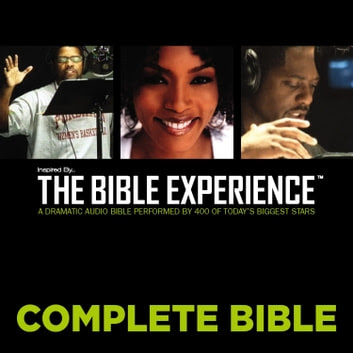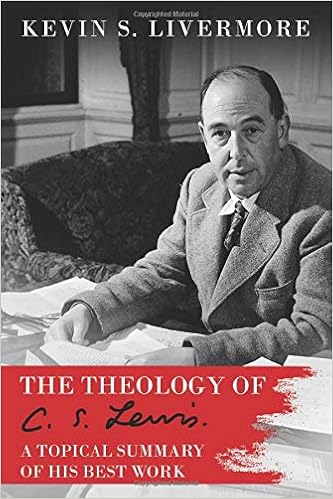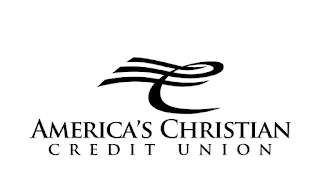For this week, read Exo 1:1-22,
Although most translations do not include it, the book of Exodus begins with the Hebrew conjunction usually translated “and.” This connects Exodus with the events that concluded Genesis.
See Gen 29:31–30:24; Gen 46:5–27.
This opening verse indicates that the narrative of Exodus is a continuation of the story of Abraham’s descendants that began in Gen 12–50. By the end of Genesis, Abraham’s grandson Jacob (also known as Israel) has moved his family to Egypt due to famine (Gen 45:5–8). The story of Exodus picks up many years later with the descendants of Israel living under Egyptian rule.[2]
 The Second Book of Moses Called
The Second Book of Moses CalledEXODUS
Author In the New Testament Jesus calls Exodus “the book of Moses” (Mark 12:26; cf. Mark 7:10), and there are no compelling reasons to deny the Mosaic authorship of the book (Introduction to the Pentateuch: Author and Date).
The title of the book, “Exodus,” is derived from the Greek word exodos (Luke 9:31), which means “exit” or “departure.” The book takes its name from the central event of Israel’s departure from Egypt, recorded in the book’s first fifteen chapters.
Date and Occasion Given Moses’ authorship of Exodus, we should date the book after the exodus event (c. 1450–1440 B.C.) and before his death about 1406 B.C. According to the dating below, Moses’ birth would have just fallen within the reign of Thutmose I. Hatshepsut, the widowed queen of Thutmose II, assumed male titles and even a beard as she reigned from 1504–1483 B.C. Perhaps she was the Pharaoh upon whose death Moses returned to Egypt from Midian.
Exodus carries forward the story of God’s fulfillment of His promise to Abraham to bless him and make of him a great nation (Gen. 12:2). It begins by referring to the descent of Israel into Egypt (1:1–7); this connects through Gen. 46:8–27 with the Genesis narratives. The book concludes with Israel at Sinai where the tabernacle is completed. The events covered in the book may be placed against their historical background as follows.
Joseph’s rise to power (1:5) is best set in the favorable conditions for Jacob’s family created by the rule over Egypt of the Semitic Hyksos (c. 1700–1550 B.C.). The reference at 1:8 to a new king “who did not know Joseph” likely refers to the expulsion of the Hyksos by the eighteenth dynasty founder Ahmosis I (1570–1546 B.C.). If the Exodus is dated c. 1450–1440 B.C. (Interpretive Difficulties below), the Pharaoh of the oppression was probably Thutmose I (1526–1512 B.C.), while the Pharaoh of the Exodus was Thutmose III (1504–1450 B.C.) or Amenhotep II (1450–1425 B.C.). This dating would allow a possible identification of the incoming Israelites with the Habiru, a group mentioned in the Tell el-Amarna letters (correspondence between Egypt and its Syro-Palestinian vassals during the fourteenth century B.C.). The Habiru were a social or occupational class commonly attested in texts from 2000 B.C. onwards. They were political outcasts in Palestine (Gen. 14:13 note).
The written preservation of the words of God’s covenant has central importance for the theology of the Book of Exodus. God not only speaks His words to His assembled people at Sinai, He also gives them His Ten Commandments in writing, “written with the finger of God” on tablets of stone (31:18; cf. 32:15, 16; 34:1, 28). The terms of the covenant were further specified by the so-called “Book of the Covenant” (20:22–23:19), the words of God written down by Moses, the mediator of God’s covenant (24:4, 7; 34:27).
The Sinai covenant (19:1–20:21; ch. 24) resembles in both form and content the state treaty form of the second millennium B.C., particularly the Hittite state treaties. These treaties included a preamble (20:2), stipulations (20:3–17), ratification (24:1–11), and blessings and curses. A copy of the treaty was often preserved at the sanctuaries of the parties (e.g., the two tablets of 31:18). Also, the similarity of the content of the case laws of chs. 21–23 to ancient Near Eastern codes (particularly the Code of Hammurabi of Babylon, c. 1750 B.C.) has often been noted.
Interpretive Difficulties The date and route of the Exodus have been subjects of considerable debate. Biblical chronology dates the exodus event at 480 years before the reign of Solomon (1 Kin. 6:1). This would place the event at about 1440 B.C. This early date is consistent with Judg. 11:26, which declares that three hundred years had elapsed since Israel entered Canaan. The c. 1440 B.C. date is also supported by 12:40, 41, where 430 years is the duration of Israel’s stay in Egypt. The Pharaoh of the Exodus would then be Thutmose III or Amenhotep II.
Advocates of a much later date appeal to the name “Raamses” (or “Rameses,” Gen. 47:11) as one of the store cities built with Israelite labor (1:11). Rameses II (1304–1236 B.C.) is taken to be the Pharaoh of the Exodus, and the approximate date set at 1270 B.C. This is held to be more consistent with the archaeology of cities destroyed in Palestine and with the lack of earlier settlement in Transjordan (the region east of the Jordan River and the Dead Sea). However, more recent discoveries in Transjordan and a new evaluation of the destruction of Jericho have weakened the case for the late date.
The route of the Exodus began at Rameses. Its exact location is the subject of considerable debate, though modern Qantir is the site most favored (Tell el-Daba). From there the Hebrews journeyed south to Succoth (13:20). Here, apparently unable to move on, the Hebrews turned northward (14:2). Three sites are mentioned, Baal Zephon, Migdol, and Pi Hahiroth. Baal Zephon is associated with Tahpanhes, bordering Lake Menzaleh, one of the salt lakes between the Mediterranean and Gulf of Suez. There were three possible routes of Israelite escape. The “way of the land of the Philistines” (13:17) connected Egypt with Canaan by the heavily fortified coastal route. A second route, the way of Shur, began near the Wadi Tumilat in the Delta area, crossed to Kadesh Barnea, and branched off to Canaan. The Egyptian boundary wall of Shur may have been a major obstacle to this route. In leading the people south to southern Sinai, the Lord not only brought them to the mountain He had designated to Moses, but distanced them from further contact with the Egyptians. The deliverance through the sea may have been on a southern extension of Lake Menzaleh.
The Sinai peninsula is a triangle of land measuring approximately 150 miles across at the top and 260 miles along the sides. Two arms of the Red Sea, the Gulf of Suez and the Gulf of Aqaba, flank it. The Hebrews proceeded south along the west coast of the Sinai. The bitter waters of Marah (15:22–25) are usually identified with Ain Hawarah (some forty-five to fifty miles south of the tip of the Gulf of Suez), but Ain Musa may be the correct location. Elim with its many springs and trees has been identified as Wadi Gharandel, the encampment by the Red Sea (Num. 33:10), about seven miles south of Ain Hawarah. The wilderness of Sin would best be identified with Debbet er-Ramleh, a sandy plain along the edge of the Sinai Plateau. If the traditional location of Mount Sinai as Jebel Musa is correct, Israel would have then turned inland by a series of valleys to Jebel Musa, traveling through the desert of Rephidim, where they fought against the Amalekites (17:8–16). Rephidim was the last encampment in the wilderness of Sinai before the sacred mountain. Then they proceeded to Mount Sinai (ch. 19) where they received the law.
Characteristics and Themes Several major themes are evident in the Book of Exodus. First, it tells how the Lord liberated Israel from Egypt to fulfill His covenant with the fathers. A second major element of the book is the covenant revelation at Sinai, which specified the terms of relationship between the holy God and His people. The third theme issues from the first two and is their consummation: the reestablishment of God’s dwelling with man. Each of these themes involves a triumph of divine grace: God’s mighty rescue of His people from slavery in Egypt, His thunderous self-revelation at Sinai, and His gracious condescension to dwell with His erring people in the tabernacle. The unfolding of these themes also reveals the Lord’s holiness and grace in His covenant law and in the ceremonial symbolism of Israel’s life and worship.
Crucial to the narrative is Moses’ role as mediator between God and man. As God’s chosen servant, Moses is the mediator of judgment against Egypt, and is the one through whom God delivers Israel. Through Moses God gives His revelation at Sinai. Moses also shepherds the people through the wilderness to the Promised Land. He pleads for the people, and he is the one through whom the Lord provides food and water. But Moses’ role in the history of redemption prepares pointedly for Christ, the Mediator of the new covenant (Deut. 18:15). The revelation that Moses receives of God’s name “abounding in goodness and truth” (34:6) justifies the building of the tabernacle, but that description of the Lord points forward to the coming of the true tabernacle, the incarnate Christ, the greater Servant of the Lord (John 1:14, 17; Heb. 3:1–6).
God’s law reveals His holy nature and requires holiness of the people among whom God will dwell. The ceremonial regulations for Israel’s life and worship (chs. 25–31; 35–40) mark out the separation of Israel as the people among whom God lives and rules, demonstrating His kingdom before the nations.
In addition to its description of the historical events by which Israel was delivered to become God’s people, Exodus also presents a major illustration of God’s saving work throughout history. The savior God redeems His chosen people from the powers of evil, judges those powers, and claims His people as His firstborn son, a holy nation of priests among whom He dwells by His Spirit. The pattern of divine victory over enemies, followed by the establishment of the divine dwelling place, is repeated in Christ’s first and second advents (e.g., Eph. 2:14–22; Rev. 20:11–22:5).
The symbolism found in Exodus becomes reality in the new covenant (Jer. 31:31–34; Col. 2:17; Heb. 10:1). The sprinkled blood of animal sacrifice is now replaced by the blood of Christ (24:8; Matt. 26:27, 28; Heb. 12:24; 1 Pet. 1:2). The symbolic substitution of the Passover lamb is fulfilled in Christ, the Lamb of God, our Passover sacrifice (John 1:29; 1 Cor. 5:7). His “exodus” at Jerusalem (Luke 9:31) accomplishes the salvation of the true people of God. God’s new covenant people are joined to Jesus Christ, in whom the Gentiles become the people of God, members of the commonwealth of Israel and fellow citizens with the Old Testament saints (19:5, 6; Eph. 2:11–19). The full meaning of the description of Israel in Exodus may now therefore be applied to the churches of the Gentiles (1 Pet. 2:9, 10).❑
Outline of Exodus
I. God Delivers His People: The Exodus (1:1–15:21)
A. God in Faithfulness Remembers Israel (chs. 1; 2)
B. God Calls Moses to Deliver Israel (3:1–4:26)
C. Pharaoh Rejects God’s Demand (4:27–7:13)
D. God’s Judgment Against Egypt (7:14–10:29)
E. God Delivers Israel from Egypt (11:1–13:16)
F. God Saves Israel at the Red Sea (13:17–15:21)
II. God Leads His People: The Wilderness Testing (15:22–18:27)
A. Marah to Elim: God Brings Healing (15:22–27)
B. Wilderness of Sin: God Provides Food (ch. 16)
C. Rephidim: God Provides Water (17:1–7)
D. Rephidim: God Provides Protection (17:8–16)
E. Mountain of God: God Provides Organization (ch. 18)
III. God and Israel Enter into Covenant (chs. 19–24)
A. Preparations for the Covenant (ch. 19)
B. God Proclaims the Covenant (chs. 20–23)
C. Israel Ratifies the Covenant (ch. 24)
IV. God Reveals the Pattern of the Tabernacle and Its Ministry (chs. 25–31)
A. The Tabernacle, Courts, and Furnishings (chs. 25–27)
B. The Priestly Ministry (chs. 28–30)
C. Artisans for the Tabernacle Construction (31:1–11)
D. Sign of the Covenant and the Tablets (31:12–18)
V. Israel’s Rebellion, Judgment, and Restoration (32:1–34:35)
A. Israel’s Idolatrous Worship (32:1–6)
B. Israel Judged for Idolatry (32:7–29)
C. God Threatens to Withdraw His Presence from Israel (32:30–34:9)
D. God Renews His Covenant (34:10–35)
VI. Israel’s Artisans Prepare the Tabernacle (chs. 35–39)
A. Israel Admonished to Remember the Sabbath (35:1–3)
B. Freewill Offerings for the Tabernacle (35:4–29)
C. Craftsmen Called to Begin the Work (35:30–36:17)
D. The Curtains, Boards, and Veils are Made (36:8–38)
E. The Furnishings are Fashioned (37:1–38:8)
F. The Courtyard is Made (38:9–20)
G. Summary: Treasurer’s Report (38:21–31)
H. The Priestly Garments Are Sewn (39:1–31)
I. The Work Completed (39:32–43)
VII. Israel’s Artisans Erect the Tabernacle (ch. 40)
A. Instructions for the Tabernacle Erection (40:1–16)
B. Moses Supervises the Raising of the Tabernacle (40:17–33)
C. God’s Glory Fills the Tabernacle (40:34–38)
§ 1:1–4 Exodus and Genesis are linked by this introduction (Gen. 46:8–27). God’s promise to Abraham is fulfilled by Israel’s fruitfulness (Gen. 12:2).
§ 1:5 seventy. See notes Gen. 46:15–27. The number going into Egypt is sometimes given as seventy-five (text note; Acts 7:14), with the difference due to who is counted. The Septuagint text (the Greek Old Testament) adds five of Joseph’s further male descendants, yielding a total of seventy-five. With women and children the total number was over 150.
§ 1:7 multiplied … exceedingly. The terms “fruitful,” “multiplied,” and “the land was filled” remind us of Gen. 1:26–28. Israel fulfills the mandate given to humankind in Gen. 1. The land was probably the land of Goshen in northeastern Egypt, in the Wadi Tumilat in the Delta, a valley 30 to 40 miles long (cf. Gen. 47:4).
§ 1:8–22 God’s multiplication of Israel leads to their oppression by the Egyptians.
§ 1:8 a new king. The beginning of a new era is marked off by the advent of a new Pharaoh. This Pharaoh may have been Ahmosis I (1570–1546 B.C.) of the eighteenth dynasty, who expelled the Hyksos, the Semitic rulers of Egypt from about 1700–1550 B.C. (Introduction: Date and Occasion; Acts 7:18 note).
§ 1:11 Pithom and Ramses. These cities for storing agricultural provisions and military supplies were located in the strategic Nile Delta region. Pithom was probably located at modern Tell er-Ratabah or Tell el Maskhutah, and Ramses is identified as modern Qantir. This item comes too early in the oppression cycle to be identified as the work of Ramses II (1304–1236 B.C.) who is often identified as the Pharaoh of the Exodus (Introduction: Interpretive Difficulties; Gen. 47:11 note). The only other Pharaoh with the necessary forty years’ reign was Thutmose III (1504–1450 B.C.). By the nineteenth dynasty the term “Pharaoh” (Egyptian for “great house”) became a royal title. Earlier it was a synonym for governmental authority.
§ 1:14 bitter. The bitter oppression of Egypt was later commemorated by the bitter herbs of the Passover meal (12:8).
§ 1:15 Hebrew. See note Gen. 14:13.
midwives. Two midwives to serve such a large population seem far too few; they may have been guild leaders. Their names are Semitic and v. 15 identifies them as Israelite.
§ 1:16 birthstools. These consisted of two stones upon which women in labor squatted[3].
Exo 3:1-22.
 § 3:1 desert. An uncultivated area but capable of sustaining grazing. According to 34:3 and Num. 10:11, the desert of Sinai sustained Israel’s flocks for a year. Horeb and Sinai are terms that possibly distinguish Horeb as an entire range from Mt. Sinai (19:18, 20; cf. Deut. 4:15).
§ 3:1 desert. An uncultivated area but capable of sustaining grazing. According to 34:3 and Num. 10:11, the desert of Sinai sustained Israel’s flocks for a year. Horeb and Sinai are terms that possibly distinguish Horeb as an entire range from Mt. Sinai (19:18, 20; cf. Deut. 4:15).After reading Exo 2:11-22, go to
Earlier Abraham’s age was once considered an obstacle to having children (17:17; compare Heb 11:11–12); now he takes another wife and has six more children. Genesis 25:1–6 may be out of chronological sequence. First Chronicles 1:32, which refers to Keturah as a concubine, favors this suggestion. Compare note on Gen 25:12–15.
The term here refers to the land of Midian, which was in northwest Arabia, east of the Gulf of Aqaba. As a clan (or confederacy of clans), the Midianites were located in a widespread area from Midian to the northern borders of Egypt. Midianite traders purchased Joseph from his brothers (37:25,28; compare Judg 8:24) and sold him to Ishmaelites (Gen 37:28).[7]
The Midianites were brothers from another mother to the children of Abraham and Sarah, her name was Keturah
What is his heritage and why do you think it’s included in the biblical history?
Jethro had a significant role to play as Father in Law to the person who lead the Children of Israel out of Bondage of Slavery in Egypt
Can you see how God works in this world through these verses? Yes Is Midian part of Israel? Not by the three names, Abraham, Isaac, and Jacob, no, Midian was a son of Abraham only, he was in the same category with Ishmael, half brother to Isaac but from a different mother than Hagar and Sarah, who's name was Keturah.
Abraham, Jacob, Isaac, Sarah,Rebecca, Eve, Hai Gaon and Leah
Grace be with you!
Nathan
This concludes the blog post
Appendix / Bibliography
All the items in the Bibliography are from my Logos 8 resources as digital files- Rick Livermore
 [1] Barry, J. D., Mangum, D., Brown, D. R., Heiser, M. S., Custis, M., Ritzema, E., … Bomar, D. (2012, 2016). Faithlife Study Bible (Ex 1:1–7). Bellingham, WA: Lexham Press.
[1] Barry, J. D., Mangum, D., Brown, D. R., Heiser, M. S., Custis, M., Ritzema, E., … Bomar, D. (2012, 2016). Faithlife Study Bible (Ex 1:1–7). Bellingham, WA: Lexham Press.[2] Barry, J. D., Mangum, D., Brown, D. R., Heiser, M. S., Custis, M., Ritzema, E., … Bomar, D. (2012, 2016). Faithlife Study Bible (Ex 1:1). Bellingham, WA: Lexham Press.
[8] Barry, J. D., Mangum, D., Brown, D. R., Heiser, M. S., Custis, M., Ritzema, E., … Bomar, D. (2012, 2016). Faithlife Study Bible. Bellingham, WA: Lexham Press.
[5] Whitlock, L. G., Sproul, R. C., Waltke, B. K., & Silva, M. (1995). The Reformation study Bible: bringing the light of the Reformation to Scripture: New King James Version (Ex 3:1–21). Nashville: T. Nelson.
















































